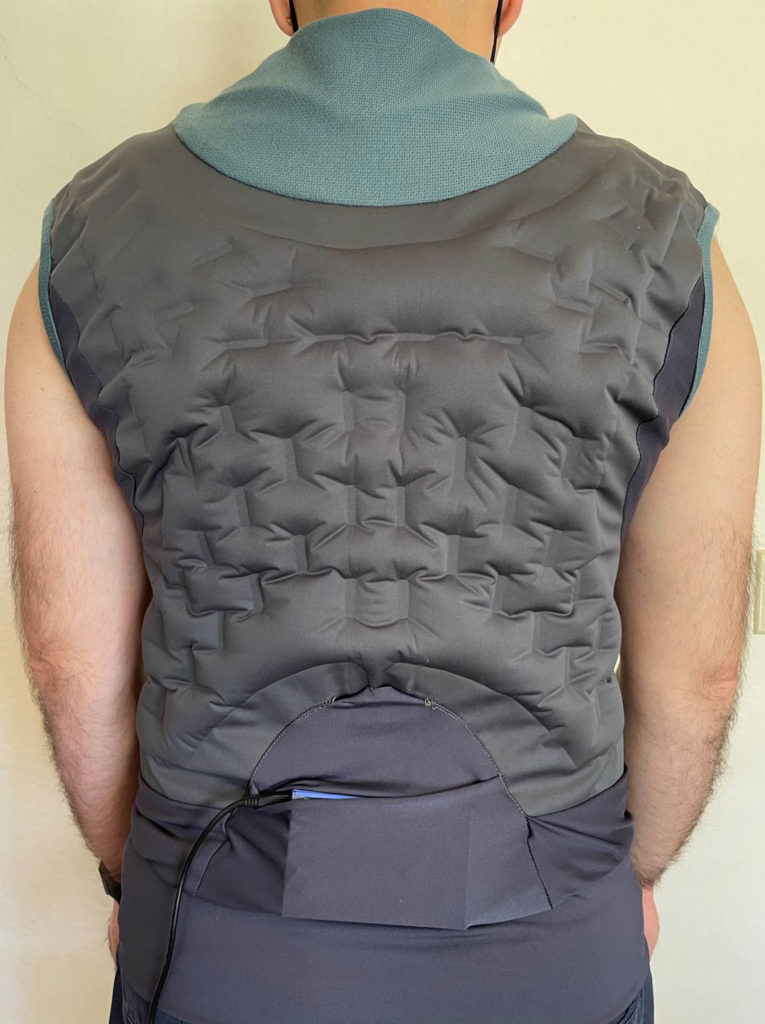
Prof. Gozde Goncu-Berk, University of California Davis, and graduate student researcher Ruoyu Zhang received the Advanced Textiles Association 2022 Award of Excellence, Best in Category Protective & Functional Apparel, for the team’s “CalmWear,” a new smart, tactile sensory stimulation clothing.
CalmWear is novel, reactive smart clothing that uses the versatility of textiles to embed pneumatic actuating and vital sensing systems that can deliver tactile stimulation through dynamic compression in response to change in heart rate variability (HRV) and respiration rate (RR). These are indicators of the emotional arousal of a person with an anxiety disorder.
The emotional and physical health benefits that come by being touched in safe ways are well established. Tactile sensory stimulation has been reported to help calm the arousal in people with Autism Spectrum Disorder (ASD), Attention Deficit Hyperactivity Disorder (ADHD), Sensory Processing Disorder as well as Anxiety Disorders. People with anxiety disorders, which affect around 265 million people worldwide, can benefit from the innovation of design-based, non-pharmacological interventions.
The design displays an automated, context-aware and dynamic tactile sensory stimulation that is triggered by real-time monitoring of HRV and RR as indicators of anxiety through e-textile sensors rather than on-command stimulation. The vest automatically responds to changes in these vital signs through dynamic inflation and deflation to regulate the amount of compression based on HRV and RR data. The air is pumped into the inflatable bladder from a single point at the lumbar region which leads to a gradual increase in the compression sensation and a gentle fluttering sensation as air flows through the textured structure.
The designers targeted adult males and females with anxiety disorders as the end users, as the majority of manual compression vests available in the market are geared towards children. They also were mindful of creating a visually appealing athletic style minimize the look of a garment for medical intervention. Patterns were drafted with product comfort in mind and were strategically zoned to allow for thermal comfort and breathability with mesh knit fabric, and ease of movement with four-way extra stretch fabric.
What sets this project apart is that the vest is fully automated and context-aware and can provide dynamic tactile sensory stimulation that is triggered by real time monitoring of HRV and RR as indicators of anxiety through e-textile sensors rather than on-command stimulation.
The product was among the International Achievement Awards featured on the show floor at Expo in Charlotte recently.
 TEXTILES.ORG
TEXTILES.ORG


